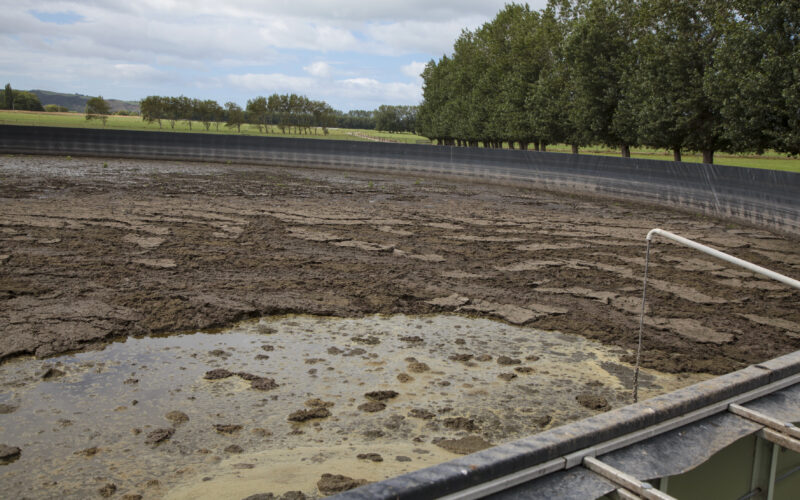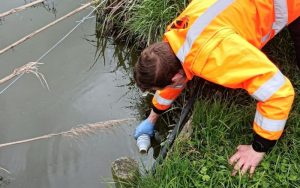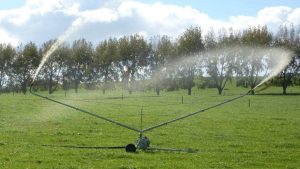
Lining an existing effluent pond is likely the cheapest way to upgrade effluent storage and meet consent requirements.
Speaking at a South Otago effluent field day held by DairyNZ near Balclutha, dairy farmer Stewart Morrison said by upgrading an existing pond he spent about a third of what he expected to spend.
The field day was held for Otago farmers to wrap their heads around Plan Change 8 of the Otago Regional Council, which is now operative.
The plan means all farmers will eventually need a consent for effluent storage and discharge.
Morrison runs 410 cows on 190 hectares in Inch Clutha and produces 170,000 kilograms of milksolids per year in a System 1 to 2. He is self-contained.
Morrison already had a 2 million litre unlined pond used for effluent storage.
When he built a new shed he decided to prevent effluent from becoming an issue, and also wanted to get a possible build and consenting completed before a rush to do it by others as consenting deadlines neared.
To help with both consenting and building a new pond he called in the help of Quinton Scandrett from Dairy Green, Morrison said.
Scandrett advised they look at the existing pond before they build a new one.
When the pond was emptied there was no evidence of leaks or seepage.
Morrison said he was initially not fond of the idea of lining the old pond, as old-style liners deteriorated fast.
But new, modern dam liners have impressed him as they are tough, he said.
His pond was drained, lined with a fabric base and a IS double sealed dam liner. A gas venting and leak detection system was also installed.
The entire build took about a year, he said.
Costs incurred by Morrison were just over $11,000 for Dairy Greens technical assistance and consent fees, about $29,000 for liner and materials, just under $3,000 for a digger contractor and just over $3,000 for effluent cleaning by slurry tankers.
This came to a total of about $46,000, minus the hours spent by Morrison.
Dairy Green managed the land use consent, and supervised the work and signed it off. It also did visual inspections.
Scandrett from Dairy Green said the pond was already well built from suitable and stable material.
It is also high up on the farm and does not present water table problems.
If a pond is pushed out from the topsoil and there is evidence of ground water on the floor, it would likely impact groundwater and would not be suitable, he said.
Minimal work had to be done to prepare Morrison’s pond to meet consent requirement.
Scandrett said the pond was made slightly bigger, the floor retrimmed after cleaning, and the floor was graded to lift one side so gravity allowed it to be drained from one side.
Even if storage facilities met all rules, a discharge consent is still needed, Morrison said.
DairyNZ extension partner for Southland/South Otago Gareth Baynham said a December 4 effluent systems deadline was for consents and not for work to be completed.
Dairy farmers Michael Souness and Stafford Fergusson also talked about their systems and consent processes.
Souness’s farm had a 3.5 million litre Klip Tank installed 10 years ago, which cost about $150,000 for the tank and $22,000 for groundwork.
Fergusson initially had a small clay-lined pond and was required to upgrade to meet consent as he had limited storage.
Fergusson upgraded to a 1.5 million litre Tasman Tank at a cost of about $254,000.
This article first appeared in our sister publication, Dairy Farmer.
You can now read the most important #news on #eDairyNews #Whatsapp channels!!!
🇺🇸 eDairy News INGLÊS: https://whatsapp.com/channel/0029VaKsjzGDTkJyIN6hcP1K























